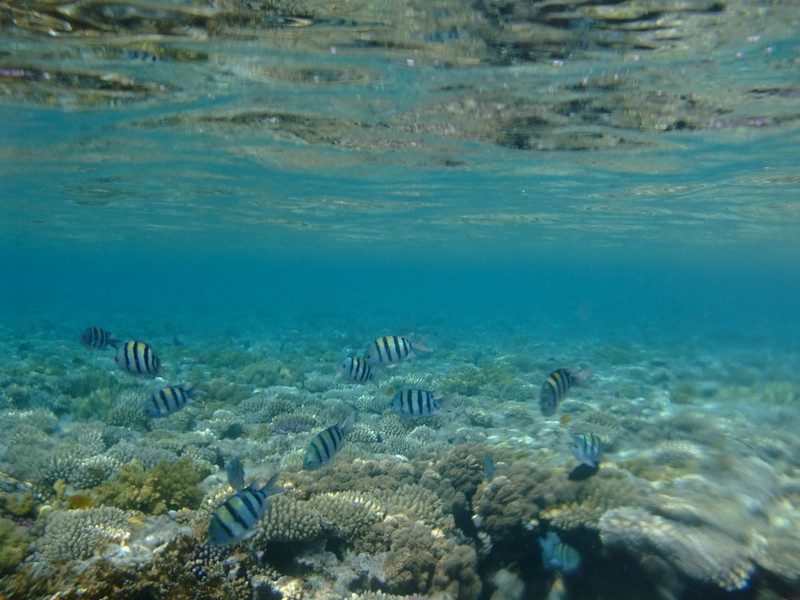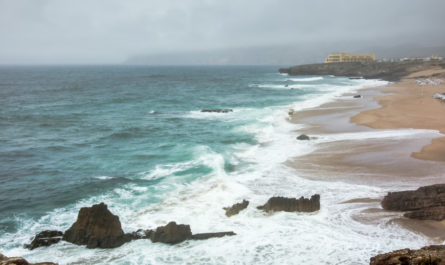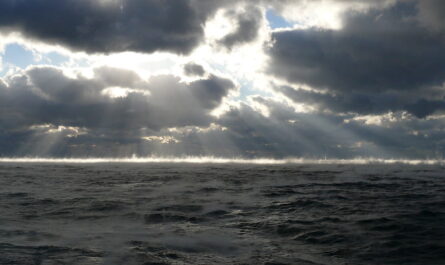The Atlantic Ocean plays an essential yet often overlooked role in our fight against climate change. As one of the world’s largest carbon sinks, the Atlantic absorbs and stores billions of tons of carbon dioxide (CO₂) from the atmosphere, significantly mitigating the effects of global warming. Carbon sequestration in the Atlantic is a complex process involving various natural mechanisms, from ocean currents and chemical reactions to the vital role of marine life. Plankton, deep-sea corals, and fish contribute to capturing and storing carbon, making the ocean a critical partner in our efforts to stabilize the climate.
This article explores the role of the Atlantic Ocean in carbon sequestration, focusing on the natural processes that allow it to capture and store CO₂ and the crucial role marine organisms play in these mechanisms. We’ll also examine the challenges facing the Atlantic’s ability to continue absorbing carbon effectively and the potential solutions to protect this essential function.
Understanding Carbon Sequestration and the Ocean’s Role
Carbon sequestration refers to the process of capturing and storing atmospheric carbon dioxide, either naturally or artificially. The ocean is the largest natural carbon sink on Earth, holding about 50 times more carbon than the atmosphere. Approximately one-third of the carbon dioxide emitted by human activities is absorbed by the world’s oceans, with the Atlantic playing a substantial role in this process.
In the Atlantic, carbon sequestration occurs in two primary ways:
- Physical or Solubility Pump: This mechanism involves the physical absorption of CO₂ from the atmosphere at the ocean’s surface. When carbon dioxide dissolves in seawater, it reacts with water to form carbonic acid, which can then dissociate into bicarbonate and carbonate ions. Cold water, which is denser, can hold more CO₂, allowing it to sink into the ocean’s depths and store the carbon away from the atmosphere for centuries.
- Biological Pump: This process relies on marine organisms, particularly phytoplankton, to absorb CO₂ through photosynthesis. Phytoplankton convert CO₂ into organic carbon, some of which sinks to the ocean floor when these organisms die or are consumed by other marine life. This organic carbon can be buried in ocean sediments, storing it for thousands of years.
The Physical Pump: How Ocean Currents and Cold Waters Store Carbon
The physical pump relies heavily on the natural movement of water and the temperature gradients in the Atlantic. Ocean currents, such as the Gulf Stream and the North Atlantic Drift, transport surface waters rich in CO₂ to colder regions, where they can sink and transport carbon into deeper layers. This process, known as thermohaline circulation or the “global conveyor belt,” is a critical component of carbon sequestration, as it moves CO₂-rich water from the surface to the ocean’s depths.
In the North Atlantic, the combination of cold temperatures and the mixing of water masses creates ideal conditions for CO₂ absorption. For example, the North Atlantic is particularly effective at sequestering carbon because the cold water there can hold more dissolved gases than warmer water, and it sinks quickly to the deep ocean. As this CO₂-rich water moves through the deep ocean, it remains trapped away from the atmosphere, reducing the amount of greenhouse gases in the air.
The Biological Pump: The Crucial Role of Marine Life in Carbon Sequestration
The biological pump is a unique process that involves marine organisms in capturing and storing carbon. It is especially dependent on phytoplankton, the microscopic plants that form the base of the ocean food chain and are the primary producers in marine ecosystems.
Phytoplankton: The Unsung Heroes of Carbon Capture
Phytoplankton are responsible for nearly half of the world’s photosynthesis, making them essential players in the carbon cycle. As they photosynthesize, they absorb CO₂ and convert it into organic carbon. When these phytoplankton die, a portion of this carbon sinks to the deep ocean, where it can become sequestered in marine sediments for hundreds or even thousands of years. This “marine snow,” which includes dead organisms, fecal matter, and other organic particles, drifts down to the ocean floor, forming a layer of carbon-rich material.
Some of the carbon from phytoplankton is also transferred to other marine organisms as they are consumed by zooplankton, fish, and other sea creatures. This carbon then moves up the food chain, becoming part of a complex system of biological storage. In addition, fish that live in deeper waters release some of this carbon when they migrate to the surface to feed, a process that helps circulate and sequester carbon within different ocean layers.
Deep-Sea Corals and Carbon Storage
While corals are more often associated with tropical reefs, deep-sea corals found in the Atlantic also play a role in carbon sequestration. Deep-sea corals grow slowly and create dense, calcium carbonate skeletons that store carbon. When these corals die, their carbon-rich structures sink to the ocean floor, where they can remain buried in sediments for millennia. Unlike shallow-water corals, which rely on sunlight and warm water, deep-sea corals thrive in the cold, nutrient-rich waters of the North Atlantic, adding to the region’s ability to capture carbon effectively.
Marine Carbonate Systems: Shell-Building Organisms and the Carbonate Cycle
Another essential aspect of carbon sequestration in the Atlantic is the carbonate cycle, which involves shell-building organisms like mollusks, crustaceans, and certain plankton. These organisms use carbonate ions in seawater to build calcium carbonate shells and skeletons, a process that helps lock carbon away from the atmosphere.
When these organisms die, their shells sink to the seabed, adding to marine sediments. Over time, these sediments can become compacted and transformed into limestone, a natural carbon storage method that sequesters carbon for millions of years. This process is essential for the long-term storage of atmospheric CO₂, as it ensures that carbon remains locked away for geological timescales.
Climate Change and Threats to the Ocean’s Carbon Sequestration Capacity
While the Atlantic Ocean plays a crucial role in sequestering carbon, climate change poses a significant threat to its capacity to absorb CO₂ effectively. As global temperatures rise, the ocean is warming, which impacts its ability to capture and store carbon in multiple ways.
Ocean Acidification
One of the most direct consequences of increased CO₂ absorption is ocean acidification. When CO₂ dissolves in seawater, it forms carbonic acid, which lowers the pH of the water. This acidification affects shell-building organisms, such as corals and shellfish, by making it more difficult for them to form calcium carbonate structures. As acidification progresses, it threatens to weaken coral reefs, disrupt food webs, and reduce the ocean’s long-term carbon storage capacity.
Rising Ocean Temperatures
Warmer water holds less CO₂ than colder water, which could decrease the ocean’s ability to absorb atmospheric carbon. The Atlantic’s surface waters are warming due to climate change, which may limit how much CO₂ the ocean can dissolve and store. Furthermore, rising temperatures can affect the biological pump by disrupting phytoplankton populations. As sea temperatures rise, certain species of phytoplankton may struggle to survive, potentially reducing the ocean’s overall carbon uptake.
Disruptions to Ocean Currents
The Atlantic Meridional Overturning Circulation (AMOC), which includes the Gulf Stream, is a key component of the physical pump that transports CO₂-rich waters to the deep ocean. Climate change is impacting AMOC by increasing freshwater influx from melting ice sheets, which affects water density and disrupts current patterns. If AMOC slows down, the Atlantic’s ability to store carbon in deep waters could be compromised, resulting in more CO₂ remaining in the atmosphere.
Innovative Solutions to Protect and Enhance Oceanic Carbon Sequestration
As we face the impacts of climate change, scientists are exploring innovative solutions to protect and enhance the Atlantic’s carbon sequestration capacity. Here are a few strategies and initiatives being pursued to ensure the ocean continues to play its crucial role in climate regulation.
1. Marine Protected Areas (MPAs)
Designating Marine Protected Areas in regions crucial for carbon sequestration, such as the North Atlantic’s deep-sea ecosystems, helps protect these areas from destructive activities like deep-sea mining, overfishing, and oil drilling. MPAs provide a refuge for marine organisms involved in carbon storage, allowing phytoplankton, fish, and deep-sea corals to thrive without human interference. Protecting these areas supports the health of the biological pump and helps maintain the ocean’s ability to sequester carbon effectively.
2. Restoring Coastal Ecosystems
Coastal habitats, such as mangroves, salt marshes, and seagrasses, play a significant role in carbon sequestration, known as blue carbon. Although these ecosystems are more common in coastal areas rather than the open Atlantic, restoring them can enhance carbon storage along the Atlantic coastlines. These ecosystems capture CO₂ and store it in plant matter and sediments, providing a valuable buffer against climate change.
3. Supporting Sustainable Fisheries
By managing fish populations sustainably, we can ensure that the Atlantic’s carbon sequestration processes remain intact. Overfishing disrupts food webs and alters marine biodiversity, which can impact the biological pump. Sustainable fisheries management practices, such as protecting keystone species and avoiding destructive fishing methods, help maintain the health of marine ecosystems, supporting the continued sequestration of carbon.
4. Promoting Ocean-Based Carbon Capture Technologies
Emerging technologies aim to enhance the ocean’s natural carbon sequestration abilities. For instance, researchers are exploring ocean alkalinity enhancement, which involves adding alkaline minerals to the water to increase its capacity to absorb CO₂. Additionally, seaweed farming is being considered as a way to boost carbon capture, as seaweed absorbs CO₂ during growth and can be harvested or left to sink, sequestering carbon in deep waters.
Conclusion: The Atlantic Ocean’s Essential Role in Climate Resilience
The Atlantic Ocean’s role in carbon sequestration is crucial in the fight against climate change, providing a natural system that captures and stores vast amounts of atmospheric CO₂. Through complex interactions involving ocean currents, marine organisms, and chemical processes, the Atlantic helps regulate global temperatures and mitigate greenhouse gas levels.
Protecting the Atlantic’s ability to sequester carbon is vital to maintaining climate stability. By addressing the challenges posed by climate change, supporting conservation efforts, and exploring innovative solutions, we can help ensure that the Atlantic Ocean continues to serve as a powerful ally in our efforts to build a sustainable future.



